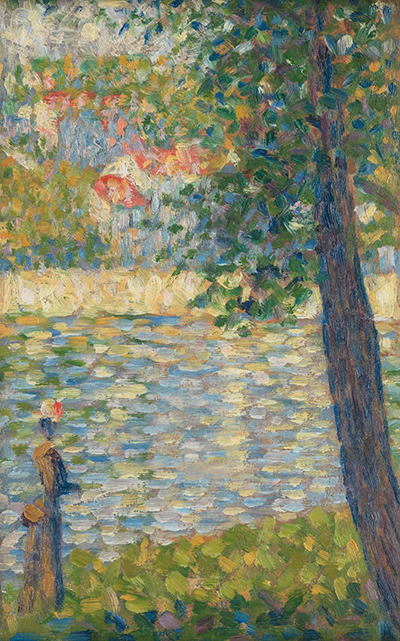It is unusual, today, to find overlapping vectors between the arts and the sciences, with the former seen as creative, imaginative and fictional, while the latter are logical, factual and rooted in truth, but this, in fact is a relatively new phenomenon. Aristotle, were he teaching today, would be horrified by the separation of the world into subjects and topics, given that the whole purpose of teaching and philosophy in his day was to give students a good understanding of the workings of the whole world – putting together, rather than breaking apart the world into its component parts.
And this can be seen in the works of Georges Seurat, an artist with a deep interest in the science of colour and luminosity, whose greatest paintings were inspired by Michel Chevreul's work restoring tapestries by combining two colours to create the impression of a third, intermediate shade. Chevreul was a chemist who, as well as accurately restoring tapestries, made recipes for soaps and candles as well as discovering that diabetics excrete glucose in the urine – his not insignificant contribution to art was almost incidental.
It was Chevreul's discovery that led to the invention and adoption by various Impressionist artists of pointillism and other methods that became known as Post-Impressionism which can be seen in works such as this one: The Morning Walk, Study for the Seine at Courbevoie by Seurat, in which a woman is captured during a pensive moment next to the water. The name indicates that this image was a preliminary sketch for the painting The Seine at Courbevoie (now in private hands). Seurat was different to many of his Impressionist compatriots in that he prepared extensively for his works, making drawings and more traditional oil paintings before employing the new, more diffuse methods to create what would become the final piece.
All the features in the painting: the river, the woman, the tree on the nearside of the river bank are detailed and clearly recognisable from a distance, but blur into blobs and splashes of disparate colour when looked at too closely. Viewers who can remember the early days of personal computers when dot-matrix printers were the standard will find this technique surprisingly familiar being similar to the pixelated images that these printers produced, again sharpening into clarity with a little distance! Seurat was either taken with his preliminary work and decided to keep it as a standalone piece, or he realised that the main work was so different from this piece that it was worth saving as it was – there is no nearside bank in the The Seine at Courbevoie at all.




